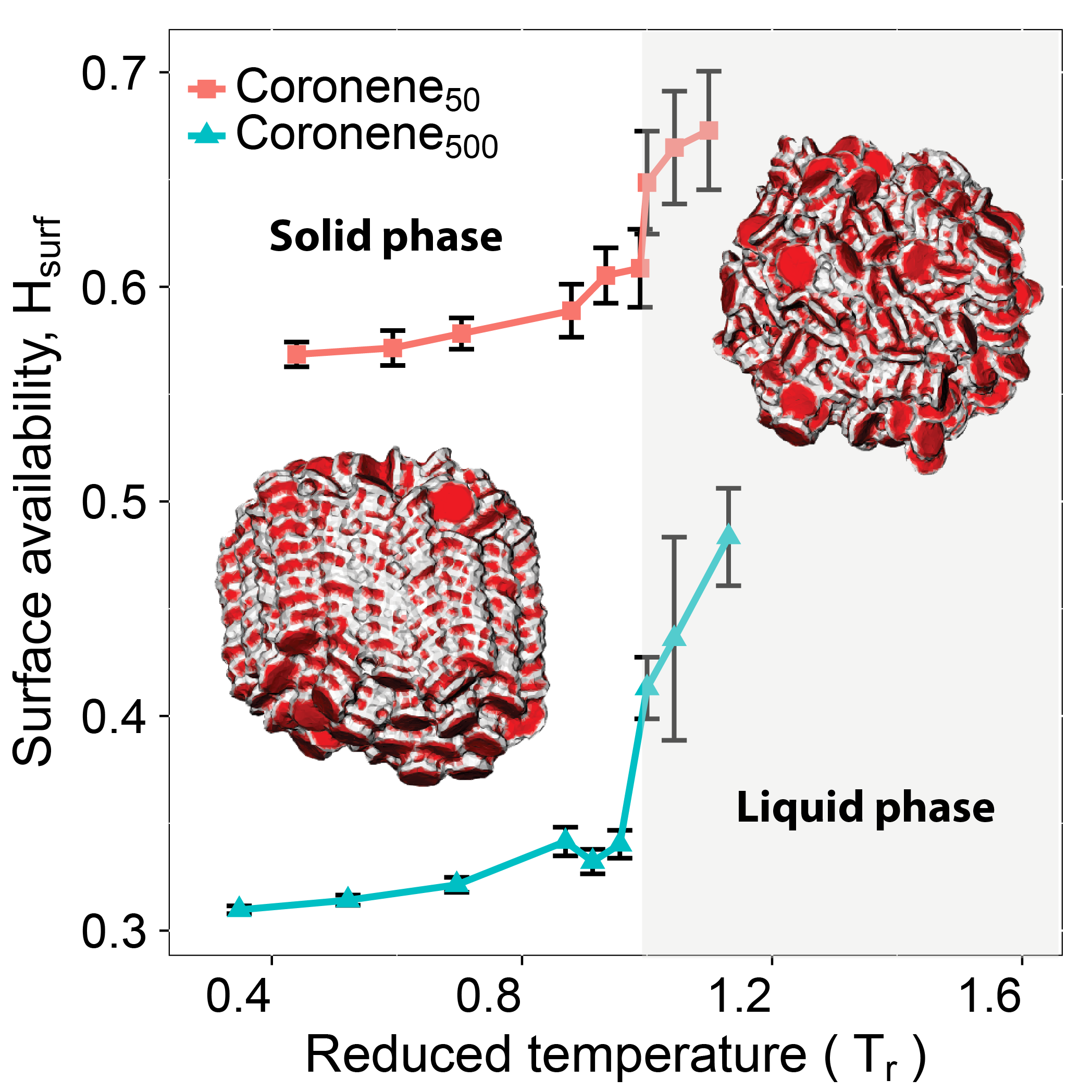Technical Report 139, c4e-Preprint Series, Cambridge
Surface reactivity of homogenous polycyclic aromatic hydrocarbon nano-clusters
Reference: Technical Report 139, c4e-Preprint Series, Cambridge, 2013
- A scheme to characterise surface atoms on molecular representations of clusters of polycyclic aromatic hydrocarbons is proposed.
- The availability of active sites on the surface of pyrene and coronene clusters is determined for various gaseous species.
- The surface availability is found to be inversely proportional to the particle size.
- Oxygen and acetylene molecules for example can penetrate into a cluster by means of surface pockets.
- Thus, surface reactions on particles are not limited to the boundary of the configuration.
 A scheme to characterise surface atoms is proposed to probe molecular representations of homogenous pyrene and coronene clusters. The concept of solvent-excluded surface, which is widely used for proteins, forms the basis of this scheme. The scheme is used to provide insights into the surface reactivity in terms of the surface availability of active atoms and sites for
different gaseous species. It was found that the surface availability of active sites varies with gaseous species, system temperature and particle size. The number of active sites available for a small gaseous species is always greater than that for a large species. Surface exposure increases with an increase in temperature and an obvious enhancement exists when transforming to liquid-like configurations. The surface availability decreases with increasing particle size following a linear relation with reciprocal size. The upper bound of parameter α, which is used in the soot literature to empirically quantify surface reactivity, was further estimated from the surface availability of hydrogen atom in the context of HACA mechanism and was well below 0.1 for reactions between mature soot particles and acetylene. By exploring one particular pocket on the surface of a coronene cluster with 100 molecules, it was noted that it is feasible for both oxygen and acetylene molecules to penetrate inside the cluster. This fact indicates that the surface reactions occurring on particles are not limited to the actual boundary of the configuration but also certain regions beyond the boundary via surface pockets.
A scheme to characterise surface atoms is proposed to probe molecular representations of homogenous pyrene and coronene clusters. The concept of solvent-excluded surface, which is widely used for proteins, forms the basis of this scheme. The scheme is used to provide insights into the surface reactivity in terms of the surface availability of active atoms and sites for
different gaseous species. It was found that the surface availability of active sites varies with gaseous species, system temperature and particle size. The number of active sites available for a small gaseous species is always greater than that for a large species. Surface exposure increases with an increase in temperature and an obvious enhancement exists when transforming to liquid-like configurations. The surface availability decreases with increasing particle size following a linear relation with reciprocal size. The upper bound of parameter α, which is used in the soot literature to empirically quantify surface reactivity, was further estimated from the surface availability of hydrogen atom in the context of HACA mechanism and was well below 0.1 for reactions between mature soot particles and acetylene. By exploring one particular pocket on the surface of a coronene cluster with 100 molecules, it was noted that it is feasible for both oxygen and acetylene molecules to penetrate inside the cluster. This fact indicates that the surface reactions occurring on particles are not limited to the actual boundary of the configuration but also certain regions beyond the boundary via surface pockets.
Material from this preprint has been published in Proceedings of the Combustion Institute.
PDF (4.6 MB)



